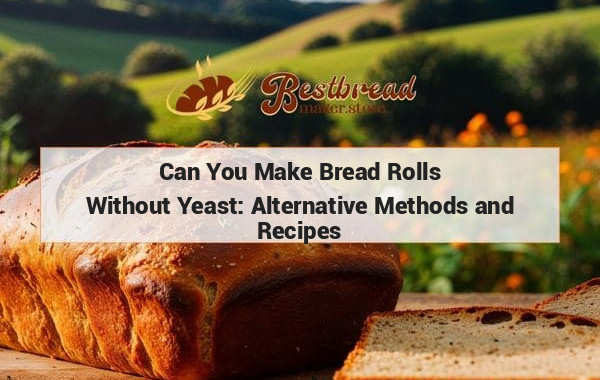Can I use bread flour to make pancakes?
Yes, you can make pancakes with bread flour. Bread flour has a higher protein content compared to all-purpose flour, which can result in a slightly chewier texture in the pancakes. However, this can also make the pancakes more fluffy and tender. Just keep in mind that using bread flour may require slight adjustments to the recipe to achieve the desired consistency and flavor.
Can I Make Pancakes with Bread Flour?
If you’ve ever run out of all-purpose flour but found a stash of bread flour in your pantry, you might be wondering: Can I make pancakes with bread flour? The short answer is yes, but there are some things to consider to ensure your pancakes turn out delicious.
Key Takeaways: You can make pancakes with bread flour, but the texture will be slightly chewier due to the higher gluten content. Adjustments to the recipe, like adding more liquid or using baking powder, can help balance the texture.
Understanding the Role of Bread Flour in Pancakes
When it comes to making pancakes, the type of flour you use significantly impacts the texture. Bread flour has a higher protein content, around 12-14%, compared to all-purpose flour, which typically has 10-12%. This higher protein level means that bread flour develops more gluten, resulting in a chewier and denser texture.
Bread Flour Basics
Bread flour is designed for yeast-based recipes, like bread, where a strong gluten network is essential. However, in pancakes, which rely on baking powder or baking soda for leavening, too much gluten can make the pancakes tough if not handled carefully.The Pancake Texture
Pancakes made with bread flour may not be as fluffy as those made with all-purpose flour, but they can still be enjoyable with a slight chewiness. To counterbalance the texture, you can make a few adjustments, such as increasing the liquid content or adding an extra egg for moisture.
How to Adjust Your Recipe
If you're using bread flour for pancakes, there are a few key tweaks you can make to ensure your pancakes are still light and fluffy, even with the higher gluten content.
Increase the Liquid
To soften the effect of gluten, consider adding a bit more milk or buttermilk to your batter. This will help to dilute the gluten structure, resulting in a softer pancake.Use More Leavening
Adding a little extra baking powder can help boost the fluffiness of your pancakes. Bread flour’s higher protein level may cause the pancakes to be denser, so a bit more baking powder will add extra lift.Don’t Overmix the Batter
Since gluten develops when flour is mixed with liquid, be careful not to overmix the batter. Stir just until the ingredients are combined, and let the batter rest for about 10 minutes before cooking. This resting period allows the gluten to relax and leads to more tender pancakes.
Nutritional Differences Between Bread Flour and All-Purpose Flour
You might also wonder if using bread flour instead of all-purpose flour changes the nutritional content of your pancakes. While the calorie count is similar, the higher protein content in bread flour offers a slight nutritional advantage, especially for those looking to increase their protein intake.
Protein Content
Bread flour contains about 3-4 grams more protein per cup compared to all-purpose flour. This difference might not seem significant, but it can add up, especially if you're looking to increase your daily protein intake.Carbohydrates and Fiber
The carbohydrate content is similar between the two types of flour, but bread flour may offer slightly more fiber depending on the brand.
Close Considerations: Bread Flour Pancakes vs. Regular Pancakes
If you're used to making pancakes with all-purpose flour, switching to bread flour can lead to subtle differences in flavor and texture. However, these differences can be enjoyable in their own way, especially if you like heartier pancakes.
Taste
The flavor of pancakes made with bread flour is slightly more robust due to the increased protein content, but the difference is subtle. Some people enjoy this slightly richer taste, while others may prefer the lighter flavor of traditional pancakes made with all-purpose flour.Chewiness
As mentioned earlier, bread flour pancakes will have a slightly chewier texture. This can be a positive if you're looking for something with more substance. However, if you prefer light and airy pancakes, sticking with all-purpose flour might be your best bet.
Other Uses for Bread Flour in Pancakes
Bread flour isn’t just for traditional pancakes; it can be a great choice if you’re making pancakes that benefit from a bit of extra chewiness and structure.
Savory Pancakes
If you’re making savory pancakes, such as scallion pancakes or potato pancakes, bread flour can provide the structure needed to hold additional ingredients without falling apart.Hearty Add-ins
Bread flour works well if you plan on adding heartier ingredients to your pancake batter, like nuts, seeds, or even grated vegetables. The extra gluten helps bind everything together, ensuring that your pancakes don’t crumble.
Bread Flour Pancakes for Special Diets
For those on specific diets, such as high-protein or low-carb diets, bread flour might offer some benefits.
High-Protein Diets
Since bread flour is higher in protein than all-purpose flour, it could be a good choice for those looking to increase their protein intake. However, remember that pancakes made with bread flour will still be relatively high in carbohydrates, so it may not be suitable for strict low-carb diets.Gluten-Free Alternatives
If you’re gluten-sensitive or intolerant, bread flour isn’t suitable. In this case, using a gluten-free flour blend specifically designed for pancakes would be a better option. Gluten-free flours, such as almond or coconut flour, offer unique textures and flavors but require adjustments in liquid ratios and leavening agents.
Can I Make Pancakes with Other Types of Flour?
If bread flour isn’t your only option, you might wonder whether other flours can work in pancake recipes. Here’s a quick rundown:
Whole Wheat Flour
Whole wheat flour can be a great substitute if you’re looking for a heartier, more nutritious pancake. It has more fiber than both bread flour and all-purpose flour but can result in denser pancakes. To balance this, consider mixing whole wheat flour with all-purpose flour or adding extra baking powder for fluffiness.Oat Flour
Oat flour is a gluten-free option that adds a nutty flavor to pancakes. It’s lighter than bread flour but absorbs more liquid, so be sure to adjust your recipe accordingly. Oat flour works particularly well for those on gluten-free diets, but you may need to add xanthan gum or another binding agent to get the right texture.
Final Thoughts on Making Pancakes with Bread Flour
To sum it up, while bread flour can be used to make pancakes, it will change the texture slightly. The pancakes will be a bit denser and chewier due to the higher gluten content. However, with a few simple adjustments, such as increasing the liquid and adding more leavening, you can still enjoy a delicious stack of pancakes using bread flour.
For those who are out of all-purpose flour or simply looking to experiment with their pancake recipe, bread flour can be a good substitute. And if you’re interested in exploring the best bread makers for home use, check out bestbreadmaker.store, where you’ll find expert reviews and recommendations on the top bread machines available.
Frequently Asked Questions (FAQs)
Can I use bread flour in any pancake recipe?
Yes, you can use bread flour in most pancake recipes, but be prepared for a denser texture. Consider increasing the liquid and leavening agents to balance the effects of the higher gluten content.Will bread flour pancakes taste different?
The taste won’t be significantly different, but bread flour pancakes may have a slightly richer, more robust flavor due to the higher protein content.What adjustments should I make if using bread flour for pancakes?
Increase the liquid content slightly, add more baking powder, and avoid overmixing the batter to prevent toughness.Can I make gluten-free pancakes with bread flour?
No, bread flour contains gluten, so it’s not suitable for gluten-free diets. Consider using a gluten-free flour blend instead.Is bread flour healthier than all-purpose flour?
Bread flour has a higher protein content, which might be beneficial for those looking to increase protein intake. However, both flours are similar in terms of calories and carbohydrates.








